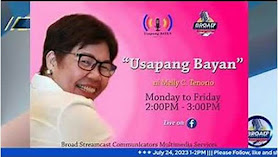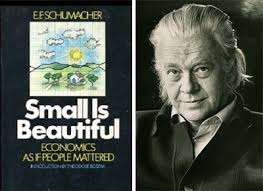Anxiety, Phobia and Depression
take away the joy of living
“Do not anticipate trouble or worry about what may never happen. Keep in the sunlight.” Benjamin Franklin
Dr Abe V Rotor
1. Uneasiness, lightheadedness, clumsiness
2. Shaky nerves, sweaty and cold palms and feet
3. Palpitation, racing heartbeat
4. Profuse perspiration, shortness of breath or choking
5. Dizziness, blurred vision, chest pain
6. Nausea, panic, fear of losing control or dying
2. Who are victims of anxiety?
All of us are invariably victims of anxiety. What do we worry or anxious about? Our aging parents, retirement benefits, sex life, health – name it, real or imaginary – and you have it, irrespective of sex, age, domicile, profession, work, race, creed, etc. While we worry for certain things and situations, other people simply don’t - they simply don’t care. All animals for that matter, especially the small, scurrying kind, appear to feel anxiety – an instinctive response necessary for survival. Rats and chicken freeze in place momentarily when subjected to sudden fear stimulus. The opossum feigns dead which is actually an involuntary fear response.3. Is anxiety necessary then as a survival mechanism?
Yes, anxiety helped in human evolution. Records of anxiety show how humans shared the planet with saber-toothed tigers. Without it few of us would have survive, if at all. But now we live in a particular anxious age brought about by modern civilization, so that anxiety has developed into a more complex kind. For example, we are worried for 1001 reasons as individuals, but we are also affected collectively. Take the case of the effects of the two world wars on mankind. Then came the Cold War which lasted for nearly half a century, creating an uneasy kind of world order imposed by fear of Armageddon, should the US and USSR and their allies engage in final confrontation. Such mass anxiety was revived by terrorism with its baptism in the 9/11 attack on the Twin Towers of New York.
4. When do we say anxiety is good and when it is not?
There is something mysterious about anxiety, its dualism. It is a normal response to physical danger so that it can be a useful tool for focusing the mind where there’s a deadline looming. But anxiety can become a problem when it persists to long beyond the immediate threat, which leads to anxiety disorder. It affects 19 million Americans, 25% not having any medical treatment. It is steadily rising in all countries where Western influence is getting stronger.
5.What are the two major forms of anxiety?
According to Sigmund Freud, One is more biological in nature and the other is more dependent on psychological factors.
6. What are the stages in the development of anxiety – and depression?
1. Stress – any external stimulus from threatening words to a gunshot, that the brain interprets as dangerous.
2. Fear – The short-term physiological response produced by both the brain and the body in response to stress.
3. Anxiety – A sense of apprehension that shares many of the same symptoms as fear but builds more slowly and lingers longer.
4. Depression – Prolonged sadness that results in a blunting of emotions and sense of futility; often more serious when accompanied by an anxiety disorder.
7. Of the 12 anxiety conditions listed in the psychological diagnostic, what are the most common?
1. Panic disorder – This is recurrent, unexpected attacks of acute anxiety, peaking within 10 minutes. One finds himself in a situation such as in a crowded elevator. If extreme anxiety symptoms appear, the person may be suffering of anxiety disorder that needs medical consultation, even if this is occasionally experienced.
2. Specific Phobia – This is characterized by consuming fear of a specific object or situation, often accompanied by mild to extreme anxiety symptoms. It may just be plain hate, or fear, say heights. Behavioral therapy – gradual introduction of the cause, until enough courage is built; and cognitive therapy – re-orientation of perception or behavior, may be needed independently or jointly.
3. Obsessive-Compulsive Disorder - a preoccupation with specific thoughts, images or impulses, accompanied by elaborate and sometimes bizarre rituals. Even if they are irrational thoughts, repetitive ritual (e.g. hand washing, prayer), time consuming – researchers are certain whether of not OCD is genuine anxiety. Whatever it is, it does respond to treatment.
"Sometimes the strongest people are the ones who fight battles you know nothing about." - John Green.
4. Post-Traumatic Stress Disorder – repeated, anxious reliving of a horrifying event over an extended period of time. It is not anxiety if the experience fades away steadily, but if it may persist, and sometimes PTSD will not appear until six months after the event. This is caused by recurrent recollection or dream of the event, feeling the even to be still occurring, experience reminding you of the event, and difficulty in avoiding thought associated with it.
5. Generalized Anxiety Disorder – Excessive anxiety or worry for days or months, but does not affect quality of life. Characterized by restlessness, difficulty concentrating or sleeping, irritability, fatigue, muscle tension. Have three or more of these symptoms confirm a person is suffering of GAD.
8. Is anxiety inherited?
Yes, some people seem to be born worriers. Some anxiety disorders are known to run in the family. If the genes involved are reinforced by environment, the expression become more distinct. (Nature-nurture) But there is a good note to this: heritability is only between 30 to 40 percent, according to researchers at Virginia Commonwealth University. Identical twins more likely show stronger tendency to suffer from generalized anxiety disorder. However, even one with low genetic vulnerability could develop a fear of something that may even be greater than one with high genetic vulnerability.
Yes. But it is also true that many kids outgrow their anxiety disorder to become well-adjusted adults. Anxiety and depression have similar underlying biology. Anxiety may surface early in life and depression later. But researchers are divided in this observation.
10. Anatomy of Anxiety - how do we explain it to the ordinary citizen?
First, let’s start with the senses picking up a threat – a scary sight, aloud noise, a creepy feeling – the information takes two different routes through the brain.
A. The shortcut – the brains automatically engages an emergency hot line to the fear center – the amygdale, which sends an all out bulletin that alerts the brain structures resulting to classic fear response as cited in symptoms, notably increased blood pressure and burst of adrenaline. All these happen before the brain is conscious of the event – before you know you are afraid. Now the second paths takes place.
B. The high road - After the fear response is activated does the conscious mind acts; the information takes a cu\circuitous route, stops first at the thalamus (processing center) to the cortex (outer brain layer which serves as data analyzer) to the senses, deciding whether there’s need of fear response. If yes, cortex signals amygdala and the body stays alert. (Amygdala is a small part of your brain, but it has a big job. It's a major processing center for emotions. It also links your emotions to many other brain abilities, especially memories, learning and your senses. When it doesn't work as it should, it can cause or contribute to disruptive feelings and symptoms.)
 11. How does the body respond to anxiety stimuli?
11. How does the body respond to anxiety stimuli?
• Stress-hormone boost – the hypothalamus and pituitary glands pump out cortisol, the stress hormone (Too much cortisol short circuits the cells in the hippocampus making it difficult to organize the memory of a trauma or stressful experience.• Racing heartbeat – The sympathetic nervous system responsible for heartbeat and breathing shifts into overdrive.• FFF (Fight, Flight, Fright) - Adrenaline shoots into the muscles preparing the body to do the appropriate action.• Digestion Shutdown – Brains stops thinking about things that bring pleasure, conserve energy otherwise wasted on digestion, hence vomiting, defecation, urination may occur.
Anhedonia is the inability to experience joy or pleasure. You may feel numb or less interested in things that you once enjoyed. It’s a common symptom of many mental health conditions like depression. Treatment is available to help you regain interest in life’s activities, like being around loved ones or listening to music.
12. What are the ways to relieve anxiety?
• Behavioral therapy – Best for phobias, obsessive-compulsive disorder. Panic disorder is to expose patients to a tiny bit of the very thing that causes them anxiety.• Cognitive therapy – rethinking, behavior modification through proper advice.• Antidepressants – Prozac, Paxil, Zoloft are best known among the antidepressant drugs.The newest group is norepinephrine which control emotion and stabilize mood.• Minor tranquilizers – examples are Xanax, Valium, Klonopin serve temporary relief and therapy under doctor’s supervision.• Exercise – talk therapy, simple exercise (at least 30 minutes), brisk walk Exercise releases natural opiates called endorphins,• Lifestyle Changes – cut back or eliminate the use of sugar, caffeine, alcohol, and recreational drugs• Alternative treatments – yoga, meditation, guided imagery, aromatherapy, massage
Audience Participation
• Cite an anxiety episode you actually experience.
• How did not overcome your anxiety.
References: The Science of Anxiety Time July 8, 2002
Lost Lives Time November 10, 2003
What Scares you? Phobias Time April 2, 2001
Acknowledgement with gratitude: References, internet images, UST, DLSU-D faculty


















0019.JPG)


















